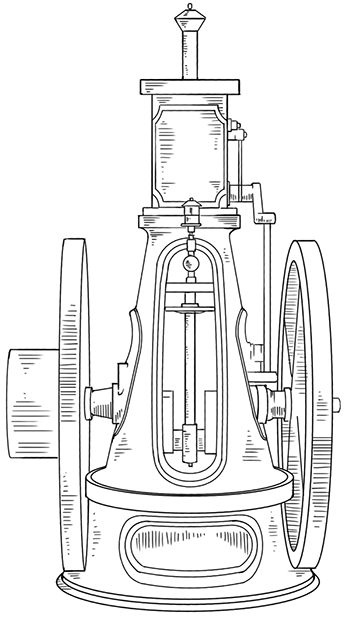LoutzkyBoris
January 15, 1865, city of Berdyansk, Russian Empire (now Zaporizhzhia region, Ukraine) —
probably August 1943, the city of Berlin, Germany
Loutzky`s internal combustion engine
These names must be familiar: Rudolf Diesel — creator of the diesel engine. Gottlieb Daimler is the founder of one of the most famous automakers. Wilhelm Maybach is the designer of the first Mercedes, Carl Benz is the inventor of the gasoline engine and the constructor of the first car that ran on it.

On the contrary, the name of Boris Loutzky is unlikely to be known to anyone. And in vain, because Diesel, Maybach, Daimler, and Benz knew Loutzky well. After all, it was he who developed the internal combustion engine, which became the prototype for modern automobiles.
Boris Loutzky studied at the Department of Mechanical Engineering of the Munich Higher School — in 1881, as one of the best graduates of the Kostyantynivka Real School in Sevastopol, he was sent to continue his studies abroad. And here, while engaged in design and scientific activities, he became interested in internal combustion engines. It was hard not to — there was only talk of cars around. At that time such engines already existed, they were even mass-produced. For instance, Nicolaus Otto, who received a patent for the four-stroke engine in 1877, opened a factory for their production.
The internal combustion engine consists of some basic details: the cylinder or chamber in which the fuel burns, the valves for fuel supply and exhaust outlet, and the crankshaft with the piston. As a result of combustion, the air in the cylinder expands and pushes the piston, which causes the crankshaft to rotate. The fuel is most often gas/air mixture, gasoline, or diesel. In those engines, the cylinder and shaft were placed either horizontally one next to the other or vertically with the shaft above the cylinder. Although the engines worked, they had a lot of disadvantages. Either they were too massive, or they overheated too much, or they had low efficiency, or all of these together.
Loutzky decided to compile details in another way: he placed the cylinder at the top and the crankshaft at the bottom. And the miracle happened — the engine became more stable, oil didn`t leak into the cylinder anymore and, perhaps the most important point, it consumed less fuel for the same power. Loutzky showed the project to his professor and applied for a patent. And in 1888 he presented his vertical gas internal combustion engine with 3 horsepower at the Munich exhibition. At the same exhibition, the German factory Köbers Eisenwerk acquired the rights to produce such engines from Loutzky and invited him to help put them into production. While working at the factory in Harburg, the Ukrainian engineer created several more new engines.
In
After a while, other engineers, including Rudolf Diesel and even Nikolaus Otto himself, who until then was a supporter of his own horizontal layout of parts, began to use engines with such layout.

Loutzky's internal combustion engine
Meanwhile, Loutzky engaged in the design of cars, which were shown on public display at the International Automobile Exhibition in Berlin in 1899. The Polytechnic Journal wrote about it this way:
“...Well-designed and resourceful constructions of automobiles were created exceptionally as a result of 10 years of intensive research, have a good reputation among the familiar motorists of genius chief engineer B. Loutzky. At the company’s exhibition stand, which was located across from the main entrance, these cars immediately caught the eye of anyone who entered the exhibition. Two vehicles, two motor tricycles, four trailed carriages, and four postal cars were presented.
Of particular interest to the public was the postal car...”
After that, Loutzky was invited to work as chief engineer at the Machine-Building joint-stock company of Nuremberg, which today produces the well-known buses and trucks under the MAN brand.